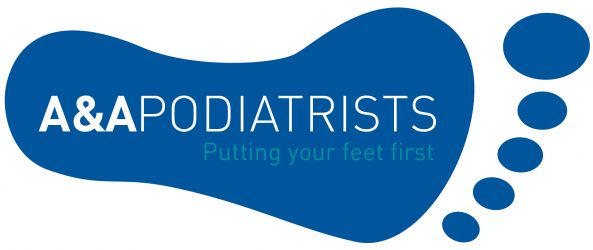Needling for Verrucae
About Verruca Needling
Verruca needling procedure is a treatment for verruca which has become a more popular treatment method over recent years. It is also known as Falknor Needling. The technique is intended to break down the verruca and create a controlled inflammatory response which, in turn, stimulates the body’s immune system to fight the infection. One treatment is sufficient for about 80% of cases and if a second treatment is needed, the outcome is often higher.
It offers advantages over the traditional salicylic acid therapy in that it does not require 2-6 treatments every week, and after the first few days, does not need to be kept dry to allow the acid to work. This makes it an ideal treatment option for busy people. The treatment is carried out under local anaesthetic. Most people report only minor soreness for 2 to 3 days post treatment. The treatment has been around for over 45 years (being first described in a medical journal in America in 1969) and is used routinely with great success by practitioners internationally. It has been reported to be highly effective, even for longstanding verruca.
Examples of Needling
Patient with multiple verruca on the left big toe and heel and right foot also. The verrucae on the big toe were treated with needling and as expected the other verrucae also disappeared.
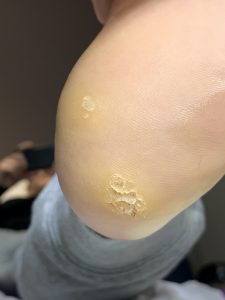
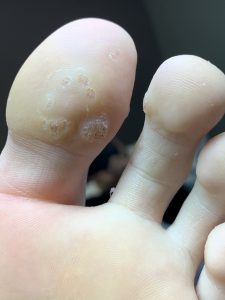
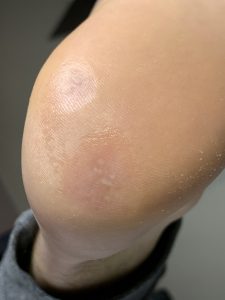
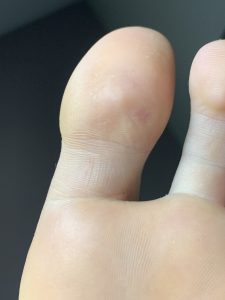
How does this method of treatment work?
Once the foot has been numbed with a local anaesthetic, the verruca is pricked with an empty sterile needle many times, the viral particles are directly exposed to the fatty tissue beneath the skin where the body is rich in immune regulators. Here, the immune system can recognise and destroy the virus. As this immune response is often systemic, treatment of only one verruca is required even where there are many lesions as spontaneous remission can occur in all, or most, verruca at the same time.
What will happen during the treatment?
There are three stages to the procedure:
1. You will be given an injection of local anaesthetic which will make your verruca and surrounding area numb. This may be around the ankle to numb the sole of the foot, or the toes depending on the location.
2. Once the area is numb, the podiatrist will carefully use a hypodermic needle and insert it into the verruca to a depth of 5-7mm. This is repeated 100-200 times around the entire verrucae to implant the virus into the dermal layer of the skin so that the body’s immune system can come into contact with the virus.
3. A dressing will be applied to the verruca once the procedure is completed. you are advised not to drive when the foot or part of the foot has been anaesthetised. We do advise going home and raising the foot and resting for 1-2 hours after the procedure. Walking on the foot and gravity cause it to bleed easier and resting and elevation allow the scab to form.
Will it be painful afterwards?
Some patients can experience soreness once the anaesthetic wares off. This soreness can best be described as a bruised feeling that can last for 1 to 2 days after the procedure. Painkillers such as Paracetamol are normally sufficient to reduce any discomfort. Use of Ibuprofen or any other anti-inflammatory medication is not advisable since it reduces the inflammatory response.
Dressings and follow-up
Routine post-operative check-ups are put in place for patients by the clinic. Most patients are seen 1 week after the procedure and then 12 weeks after the procedure. Following the procedure, the wound will have to be redressed by the patient daily for up to 10 days. Details of dressings to use will be provided to patients.
This patient shows the result before, after 1 week and 2 months following needle treatment to the centre of her left foot:
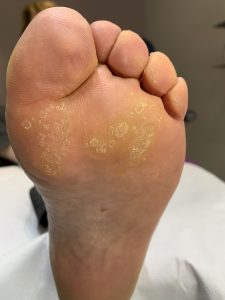
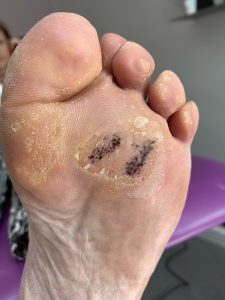
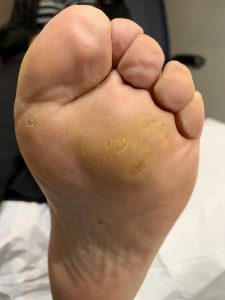
Risks and complications
Although very rare, the following risks have been noted:
• Infection
• Recurrence
• Delayed healing
• Adverse reaction to Local anaesthesia
• Scar tissue
Availability/Suitability
We usually provide this treatment after attending for an initial consultation where the suitability for the treatment will be discussed.
Cost
The cost of verruca needling is typically £250 for a new patient, and will include a follow up appointment to review your condition 3-4 months later. A second treatment can be carried out of needed after 5 months. The number of verruca treated per session will vary depending on the location and size of each lesion and not all verrucae need to be treated for them all to resolve.
Booking
We generally advise booking a new patient appointment so we can check suitability, health and discuss the procedure on the basis of your specific case. In cases where you have been advised by another Podiatrist or Doctor to have this procedure or you have tried all other treatments we could arrange a telephone consultation initially.
If you are a new patient and wish to discuss the procedure then please make the appointment using this link:
